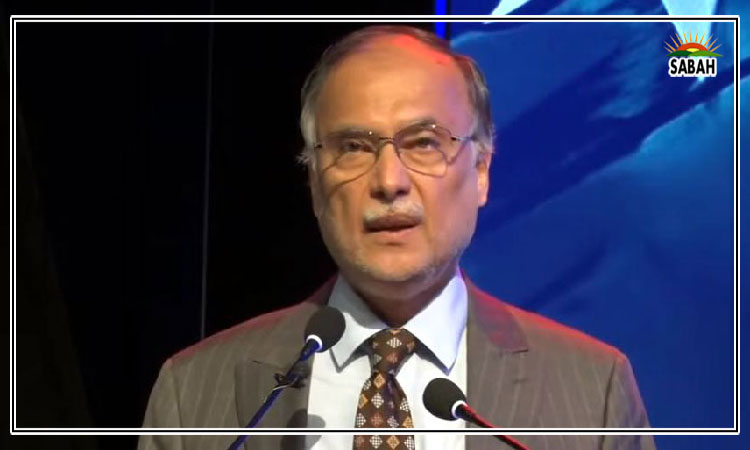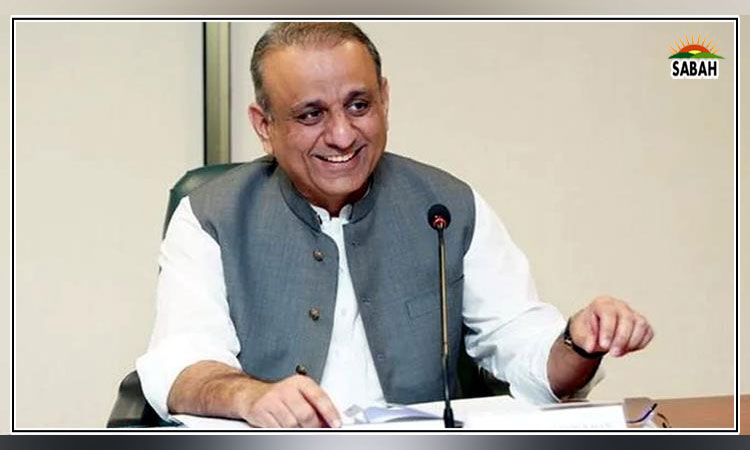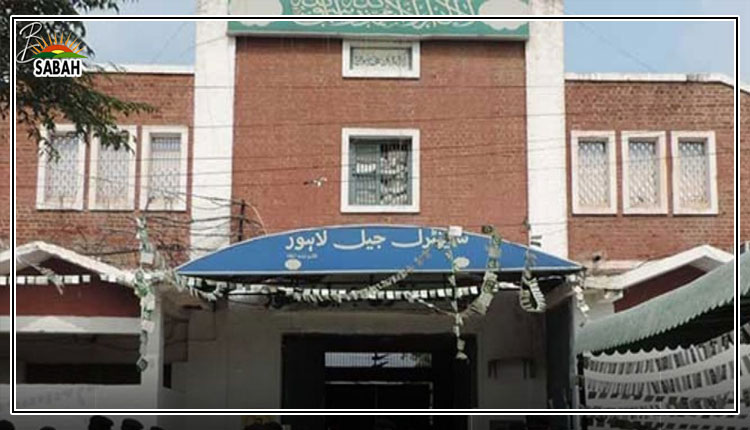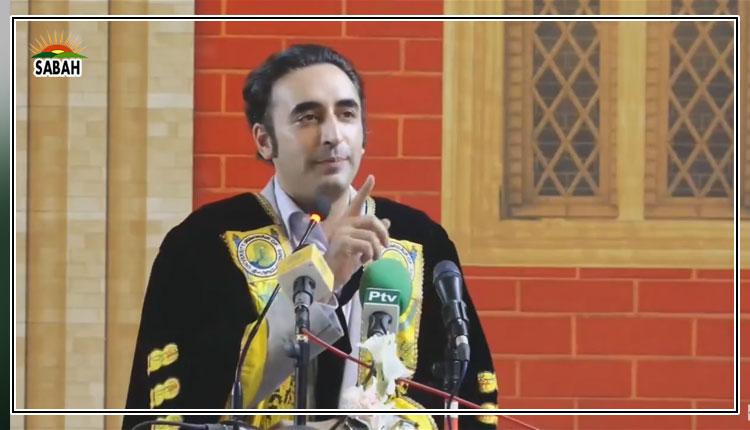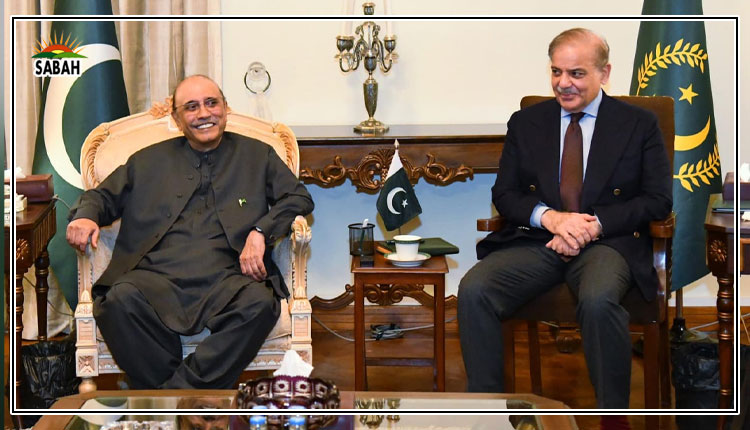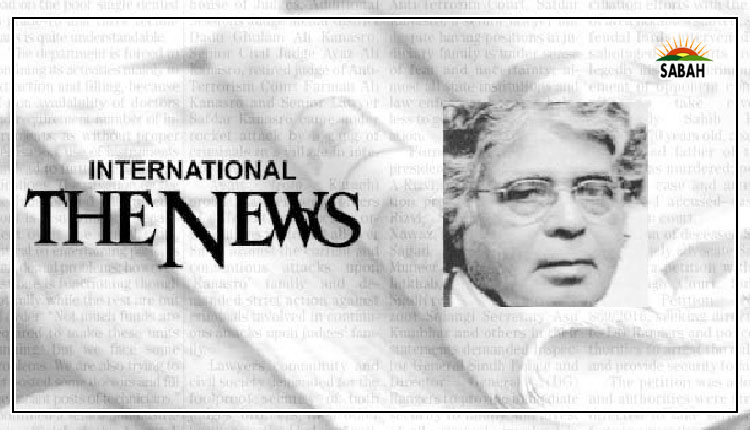Making sense of Bangladesh…Ghazi Salahuddin
In recent years, commentators in Pakistan have been citing Bangladesh as a model for progress. As a South Asian country that was described as a basket case at the time of its traumatic birth in 1971, Bangladesh is surely a miracle in its remarkable social and economic development.
And much of this advance was made during the long, authoritarian reign of Sheikh Hasina, daughter of the countrys founder Sheikh Mujibur Rahman. But this week, on Monday, she was toppled in a mass uprising and had to flee to India. Here is something almost revolutionary in its impact and meaning.
How did this happen and what messages does this carry for a world that is itself in a state of exceptional disquiet and turmoil? We, in Pakistan, have reasons to be particularly concerned about an upheaval that has a bearing on this regions political and social evolution.
There is hardly any parallel in modern history to the bondage that exists between what is now Pakistan and what is now Bangladesh. We were once one country West Pakistan and East Pakistan. How the original Pakistan came into existence is specifically a subject for contemplation during these days in the middle of August.
Yes, the timing of the violent change in Bangladesh seems providential, bringing into focus a number of landmark events that had taken place in August. In three days, we will celebrate our Independence Day and today, when this column is being published, is the eleventh of August the day when in 1947, the Quaid had made a speech that we have failed to understand or internalize.
It was on August 5, a few days back, that the army chief of Bangladesh announced the resignation of now-former PM Sheikh Hasina and the world learnt that the matriarch had fled to India, after a few weeks of bloody unrest that began with protests against the quota system in government jobs.
What is so important about the fifth of August? Well, we were all set to observe the day as Youm-e-Istiqlal to mark the fifth anniversary of Indias unilateral action of revoking Indian-held Kashmirs special status. Almost in a ritualistic manner, our stance on the long-standing dispute of Kashmir was forcefully reiterated. Think of how deeply we are entangled in this barrier to peace in this jinxed Subcontinent.
Also, not so irrelevant is the fact that the day was the first anniversary of the incarceration of Imran Khan, who embodies the political turbulence that has overwhelmed Pakistan. Could we, thus, call him the prince of our disorders?
However, my reference is to the event that took place on this day in 2024 and is now etched in history. For that matter, something happened on the fifteenth of August in 1975 that is stuck in the conscience of Bangladesh like a dagger. On this day, Bangabandhu was assassinated, and his entire family was slaughtered. Sheikh Hasina, his daughter, lived because she was abroad. On Monday, when she was banished from Bangladesh, her fathers majestic and giant statue was also toppled.
(As an aside, I must take note of how during these grim days, in this month, Pakistan was cheered with the unique gift of a gold medal in the Olympics when Arshad Nadeem set a new Olympic record in javelin throw late on Thursday night. What a joy this first individual gold ever is for the nation. He serves as an example that can lift us, momentarily, from our depths of depression.)
Anyhow, enough about the vagaries of August in South Asian history and add to the list the death of Gen Ziaul Haq in a plane crash in 1988, if you like. More important is to decipher the situation that has developed in Bangladesh. We may ignore, in this analysis, the impulsive expectation of many in Pakistan that something similar is also likely to take place in Pakistan.
We indeed have for some time been tottering on the edge, threatened by unforeseen consequences of our collective failings. The point I want to make is that Bangladesh is very unlike Pakistan, mainly in terms of its social capital and the strength of its civil society. So, was the collapse of the government prompted mostly by the dictatorial suppression of the opposition by Sheikh Hasina, who ruled for fifteen years and became the longest-serving female head of a government in the world? Did her brutal handling of the protests, resulting in so many killings, including of children, become a catalyst for change?
One would need to do a separate piece on the pivotal role students have played in this movement. Political parties or politicians were nowhere in the frontline of this revolt. Student leaders called the shots, with even the military remaining somewhat in the background. How long this will continue is something else. For the moment, two student leaders, aged 26, have ministerial positions in the interim set-up, led by the countrys respected Nobel Peace Prize winner, Muhammad Yunus. There are plans that a student will assist every adviser minister in the cabinet.
One can only give some hints about the Bangladesh model, founded largely on the empowerment of women. The economic statistics are astounding. Incidentally, in 2013, the World Bank had seen Bangladesh as the next China. The paradox here is that Hasinas son, Sajeeb Wazed has said that after all the development, Bangladesh will now become Pakistan.
Becoming Pakistan will not be easy for any country. What will happen to Bangladeshs secularism is another question to probe. In the disorder that continued after Hasinas ouster, there have been attacks on the minority community. Islamist elements are likely to reassert their presence.
Meanwhile, of course, the situation is critical. There is a sense of a breakdown of law and order. Reports say that ordinary citizens, with no police on the streets, feel unsafe and afraid. The interim government has yet to fill the power vacuum. Will it need the military to come forward?
Courtesy The News



